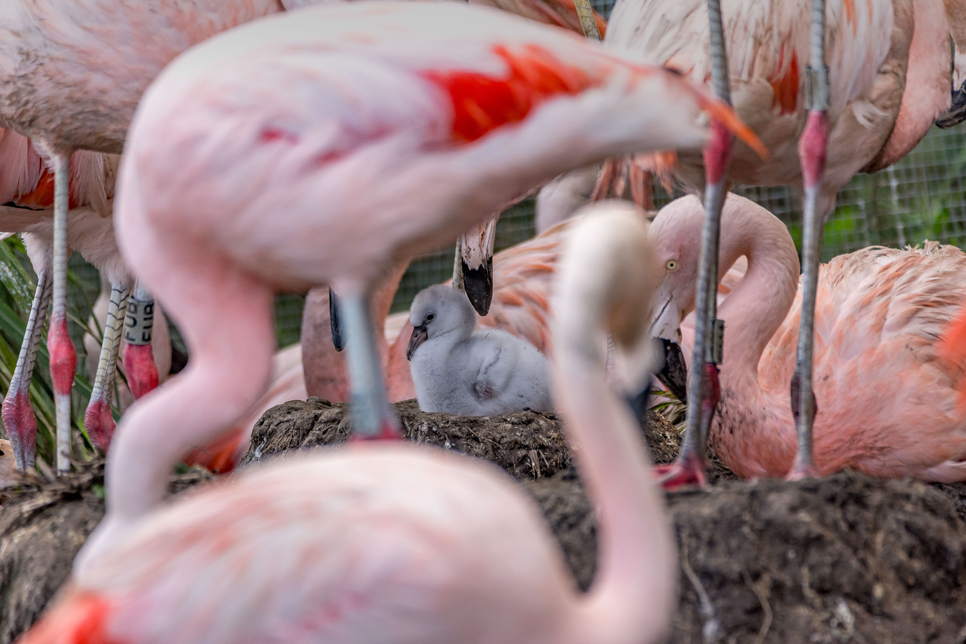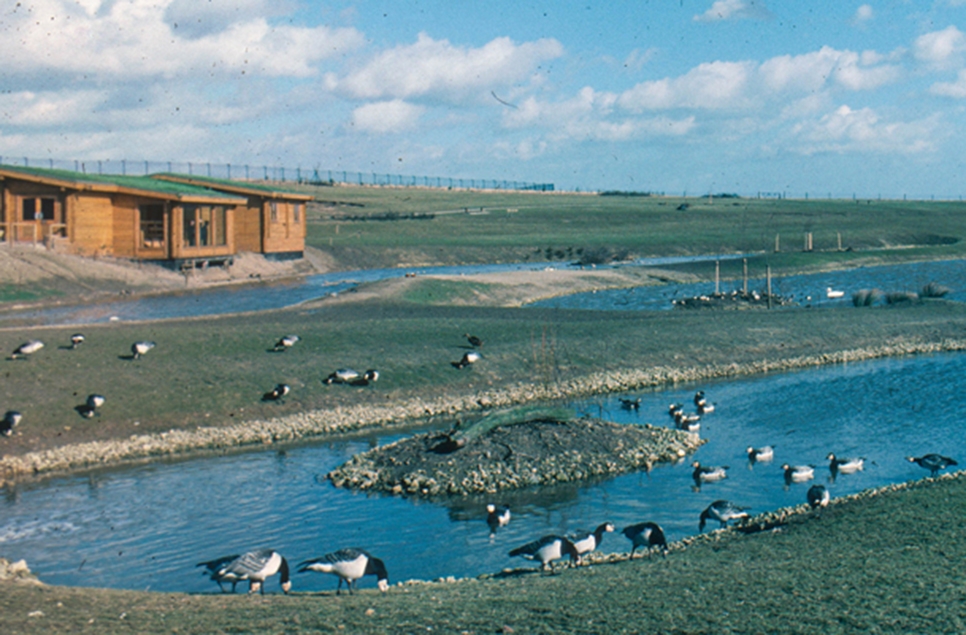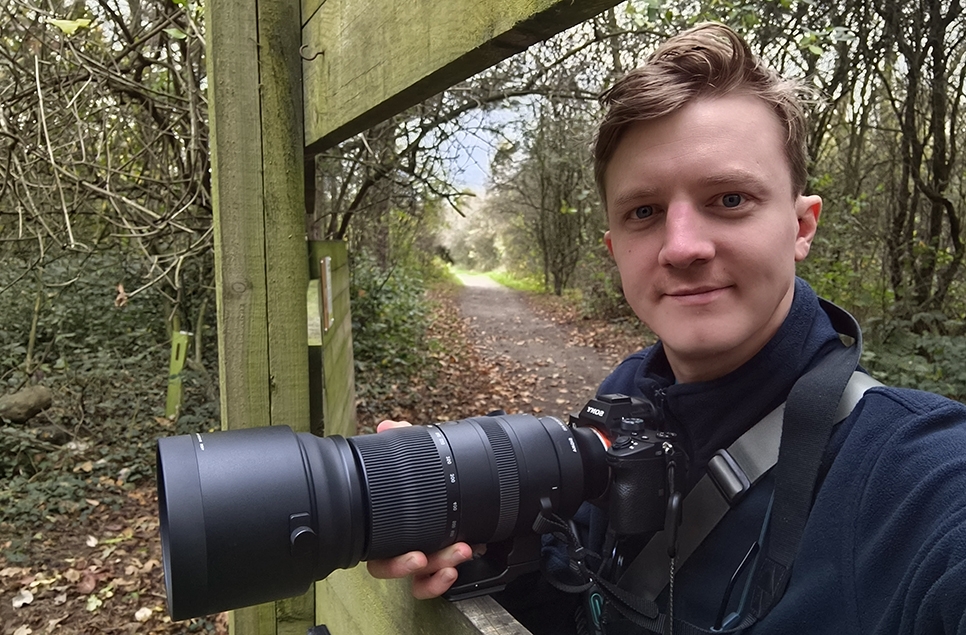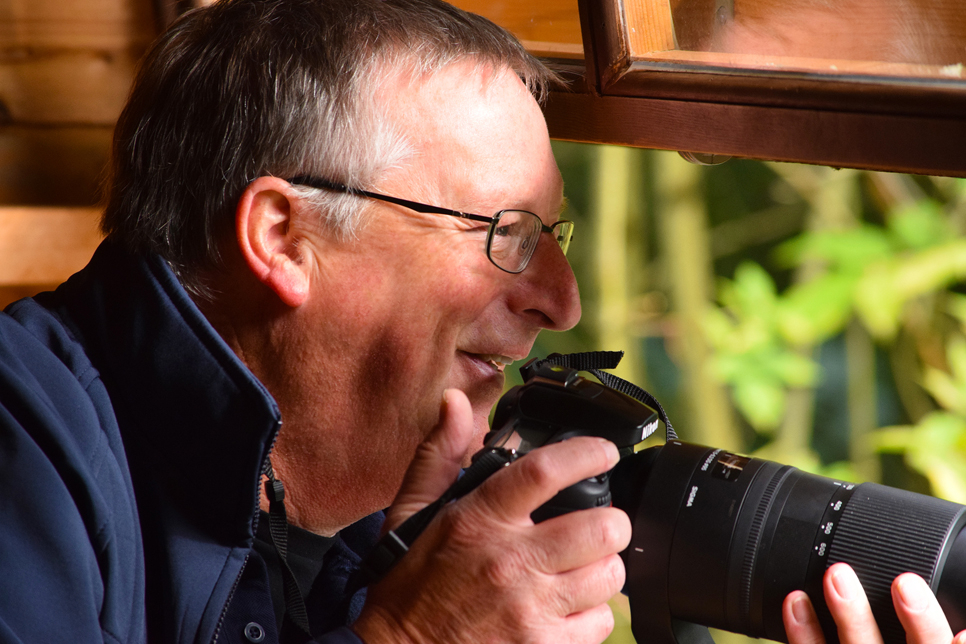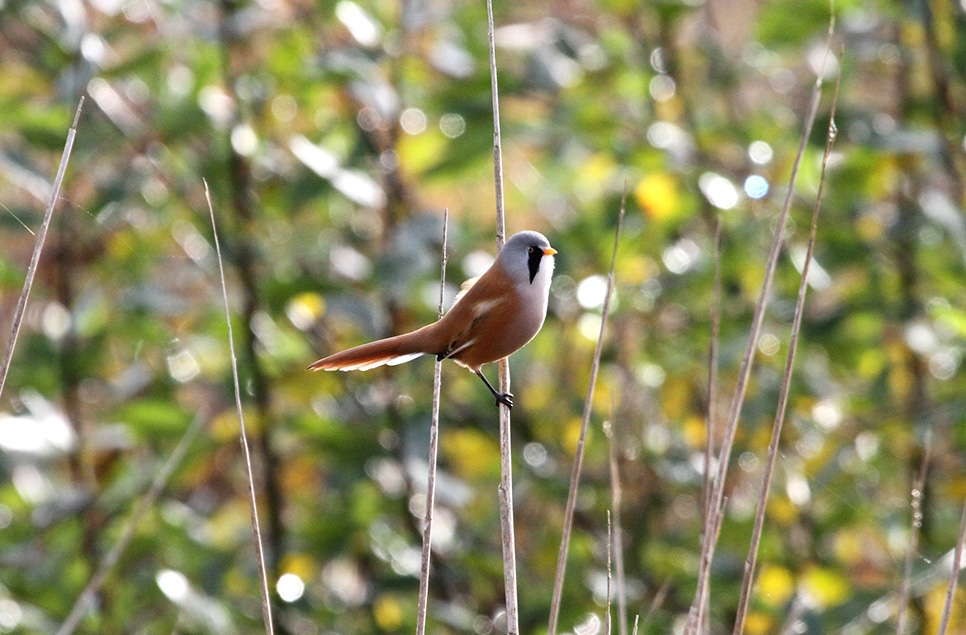Flamingos of the North East
See our flock of flamboyant flamingos here in the North East
As the only place with flamingos in the North East, we're always surprised that people don't realise these wonderful birds are literally on their doorstep!
There's flamingos, in Washington? Yes! A flamboyant flock of 56 Chilean flamingos to be exact, and you can see them in all their glory every day during the warmer months, with daily talks on at 11.45am and 2.45pm. Not only are they the only flock of flamingos in the North East, they're also the most northern flock in England!
Chilean flamingos have been part of Washington Wetland Centre's collection for over 38 years, first arriving in 1986. The Catherine Cookson flamingo house opened then and 16 flamingos were added, forming the very first flamingo flock in Washington and the North East - 13 of which are still here with us at the grand ages of around 40-42 years old!
Flamingos live in large groups and find safety in numbers. In an effort to increase our flock size and boost the flamingos confidence. In 2012 - 13 the team hand-reared 24 flamingo chicks, feeding them every 3 hours, exercising them and helping them bond. It was a mighty task, but one that had a huge positive impact.
They've moved home within our collection a few times, having first been added just in front of the centre building. They moved into their current home in 2010 and settled so well that they have stayed there ever since!
As part of a successful public vote in 2017, we secured £12k in funding to enhance this flamingo house. The project saw the installation of Solar Photovoltaic (PV) panels, UV lighting and heat lamps, which help keep the flamingos warm during winter and allowing them to get that all important UV lighting, which is important for their breeding success.
We are also in the process of planning some exciting developments this year to the flamingo exhibit - watch this space!
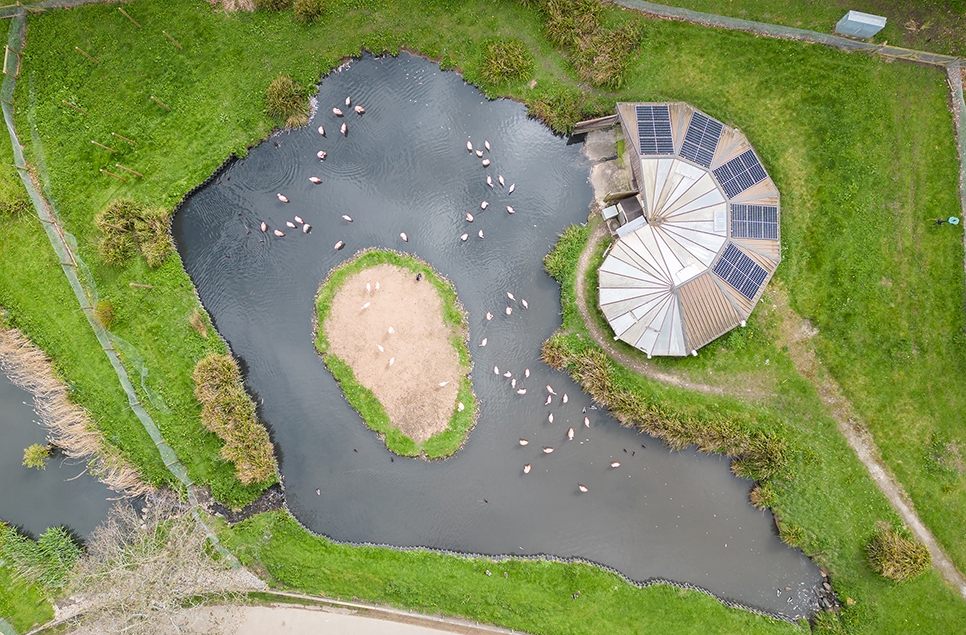
Have the flamingos ever hatched any chicks?
They sure have! In 1992, the first flamingo chick or 'flamingling', as we like to call them, hatched at the centre. There have been several hatches since over the years, with the most recently successful chicks hatching in 2019 (pictured below).
The process of flamingo-rearing is quite delicate and although we try and allow the parents to do most of the work themselves, we do give them a bit of support. Flamingos tend to lay only one egg in a beautifully formed mud mound nest. Once the egg is laid, our team of keepers carefully remove the egg and replace it with a replica wooden egg. The flamingos don't know they have been swapped and continue to tend to it, rotate it and incubate it. In the meantime, we take the egg to our specialist duckery where it is incubated. Taking the egg away helps protect it from predators, giving it the best possible chance of survival.
Flamingos are quite vocal even before hatching, and once the egg starts to call, keepers return it back to the nest of the parents to do the rest of the job. If successful, the chick will hatch and be tended to by its parent. They feed chicks a regurgitated high protein milk called 'crop milk', which is made in a pouch in their chest. Once they're a little older, they start to explore their surroundings and start filter feeding like the adults.
How do they deal with our climate
Chilean flamingos are extremely tough birds, despite their delicate appearance. In the wild, living in the Andes mountains of South American, Chilean flamingos experience a temperature range down to a beyond freezing -40°C up to a toasty 35°C, showing just how adaptable they are. Our northeast climate in comparison is far less extreme, and they have adapted well to life here!
Despite their hardiness, ice and wind are one of the dangers these birds face in the wild, which can lead to injuries to legs or wings. We monitor the weather at Washington carefully for predictions of ice or strong wind gusts – and if forecast we protect our birds by keeping them safe and cosy in their specially designed house.
Inside their house they have heating, ventilation, and flowing water. This provides them with all they need to feed, rest, stretch their legs and keep their feathers in good condition. There's also UV lighting powered by solar panels which gives the flamingos a good dose of vitamin D, which is essential to keep the flamingos bones and muscles healthy, just as it is in people.
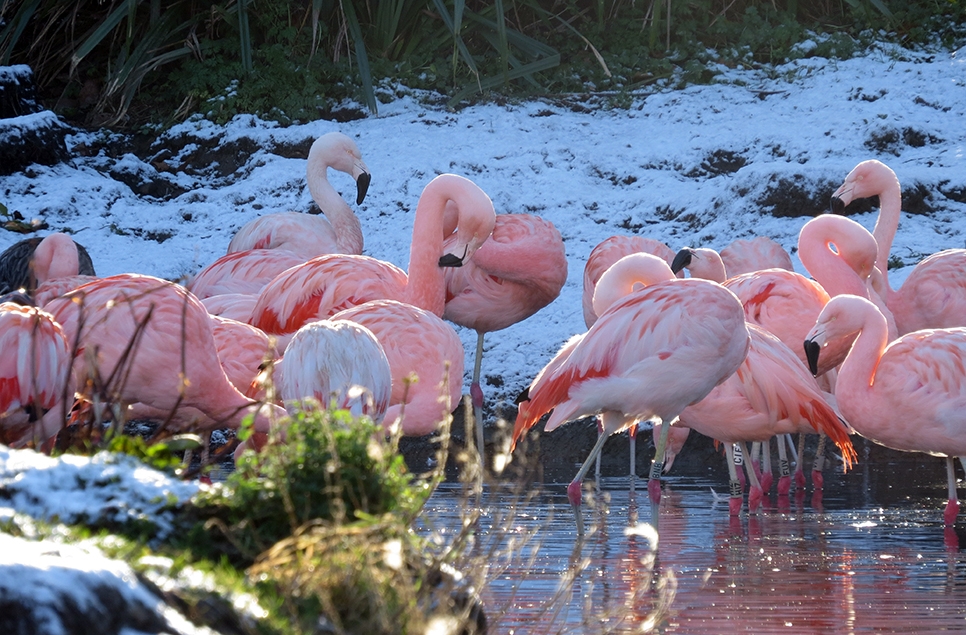
Did you know?
- There are six species of flamingo: greater, Caribbean, Andean, James', Chilean and lesser.
- Flamingos have been part of the Wildfowl and Wetlands Trust’s breeding programme for more than 49 years and part of WWT Washington’s collection since 1986.
- Today, WWT has more than 600 flamingos at four of its wetland centres – all species at WWT Slimbridge, Chilean and greater at WWT Martin Mere, Caribbean at WWT Llanelli and Chilean at WWT Washington.
- Flamingos nest in large groups and live in even larger groups called colonies, which can be home to between 10,000 and one million birds at a time.
- Flamingos can live to more than 60-years-old and still breed.
- Their knees look as if they bend backwards, but this is actually their ankle with a very long foot attached. Their knees are tucked high up beneath their bodies.
Ready to visit?
If you've been inspired to explore Washington Wetland Centre and see our flock of flamingos, find out more and plan your visit online.
Plan your visit